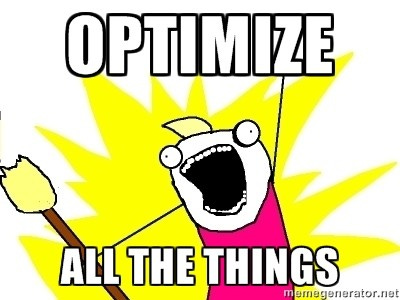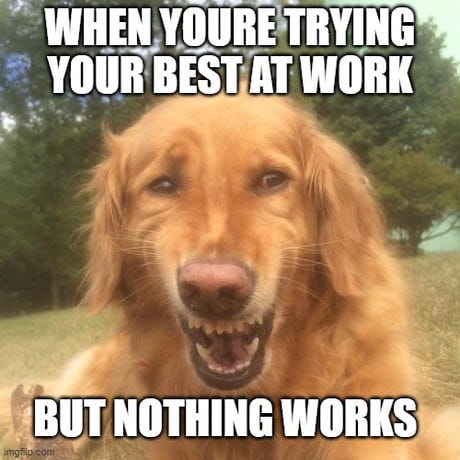Here is how I approach starting a new job
“Elena, what should I do when I start a new job?”
Let’s just say I’ve started a lot of new jobs (on purpose, okay?), so by now I’ve got a pretty solid playbook for the first 30, 60, 90 days. And since I just kicked off a new chapter at Lovable, I figured it’s time to share the goods.
The first 3 months of a new job are always tricky, needing to balance learning with delivering. And if you’re in growth, PM, marketing, or sales… the “first 3 months is just to onboard” phase? Yeah, that luxury doesn’t exist. If you’ve actually had a full 90-day ramp with no pressure to deliver - I’m impressed. Teach me your ways.
This post is sponsored by Uptempo! Growth moves fast. Your plan should too.
Halfway through the year, you can’t afford slow reforecasts or scattered plans. Uptempo connects your plan, budget, and performance in one system -so you can pivot fast, optimize spend, and prove impact.
Teams at HubSpot, Unilever, Workday use Uptempo to reforecast in hours, not weeks- and shift spend where it drives results. See how Uptempo works →
If you over-index on action, you’ll likely misfire because you’re missing context. But if you over-index on just learning, you’ll create anxiety and unmet expectations around you (because they hired you to deliver… and revenue forecast is not known for it’s patience).
It’s a tough balance to strike. Assuming you are learning at max velocity, here is how I deal with ‘take action’ part: start with protecting what’s already working, move onto quick wins, go after big bets, and finish with the strategy.
1. Protect what is working now
On day 1 I focus on protecting what’s already working. This is the fastest way to learn existing business too.
If something is driving results, your first job is to identify it and NOT MESS IT UP. Then, if possible, remove friction to make it work even better.
What it looked like at Lovable
Lovable has serious word-of-mouth momentum. Within a few months, it had built a passionate community of users who genuinely love talking about the product. That kind of emotional connection is rare in SaaS, especially in B2B. But it didn’t happen by chance, it’s in their DNA. From day one, the goal was to build the most lovable product on the market. That means no shortcuts, no broken flows or mediocre experiences. Every detail is intentional.
Influencer marketing was working well, but had no clear owner. One of my first moves was to hire someone to take full ownership of the program and grow it.
The best way to figure it out? Talk to everyone and ask, “Hey, what’s working?” Or in my case, “Hey, why are we growing?” You’ll get a bunch of different opinions, but patterns will start to emerge pretty quickly.
2. Find the easy wins
From days 2 to 30, it’s time to start tackling those “quick” wins. I define quick wins as something I’m 80% positive will have a positive impact based on my previous patterns. Most often I’d classify this steam as ‘optimizations’. Here is how I identify them:
I think about my past experiences and think about what tactics have copy/paste potential.
At the same time, I move quickly through the product with fresh eyes, spotting areas of opportunity before I get lost in the weeds.
Lastly, I ask everyone - if you were in my shoes, what would you do? Have your pen ready, because there will be a ton of great ideas thrown your way.
For Growth, this often looks like optimizing key pages, improving onboarding, doing pricing page improvements, introducing trials, testing new paid channels, or tightening up analytics.
What this looked like at Lovable
Finding obvious optimizations across variety of pages (home, pricing, dashboard, etc), onboarding and cancellation flows.
Because word of mouth was already strong - and our freemium users weren’t contributing enough to our growth loop - spinning up a referral program felt like a no-brainer to lean into PLG virality. (And yes, I took inspiration from Dropbox)
We were running paid search (SEM) but hadn’t properly explored organic search (SEO). If you’re doing SEM, you should be doing SEO too. So we signed contract with an agency to get started right away. Low effort, clear upside, zero reason to wait.
Launching annual plans and introducing rollovers (both to improve retention) were also immediate strategies that just made sense based on my past experiences.
3. Look for a big bet you want to take
As day 30 approaches, it’s time to start thinking about a few bigger bets - the kind that have a real shot at driving step-function change (and let’s be honest, they’re way more fun to work on). By now, you should begin having some sort of grasp of the context and how the business actually works - what matters, what doesn’t, and where the real levers are.
Key word: thinking. This isn’t about committing yet - it’s about shopping the idea around, stress-testing it, and asking people why it wouldn’t work. If your first idea doesn’t stick? No big deal. Move on. The goal is to fine-tune your intuition by absorbing other people’s context.
What this looked like at Lovable
Lovable has product-led growth model, meaning growth should come from the product itself, not just from marketing and sales.
But one thing stood in the way: virality and adoption was limited because collaboration was locked behind the highest paid self-serve tier. This is something I repeatedly preach against, as I’m a big believer that collaboration should be part of the free experience. You build in teams, and bringing people into the product shouldn’t be gated - all of those are inputs into delivering some output in your product. So gate output (credits in Lovable case), not inputs. So we gate roles and permissions, privacy settings, and admin controls, but not collaboration.
So I proposed making collaboration free and began shopping it around. Got zero objections and lots of encouragement - so we pushed forward. And just a few weeks later… it’s live! Now, thats a wildly fast turnaround for something that would normally take many many months. But hey, the Lovable dev team is ahmazing and they crushed it.
Full disclosure: normally I’d wait longer before making a move this big, but with such strong alignment and extremely high conviction on my side, I decided it didn’t make sense to sit on good bet. And yes, our invites nearly 10x, so it worked! But now there are many optimizations that have to take place to make it 100x.
4. Start shaping the strategy
Somewhere between day 30 and 90 I start thinking about overall strategy.
I open a Miro board and note rough strategic bets, things that feel directionally right, even if they’re still only half-formed in my head and need plenty of confirmation.
The goal is not to act on them right away but to document what I see before I lose perspective. Because let’s face it, the outsider lens fades fast.
The deeper you go inside a company, the harder it becomes to see the product like a customer. That’s why I start early, and keep it open. Most of my initial instincts land about 60–70% right. The rest get shaped by what I learn. But without that early draft, I’d have nothing to refine.
What this looked like at Lovable
At Lovable, my early instincts included:
Building a founder ecosystem
Doubling down on community
Kicking off integration strategy
Standing up student, non-profit, kid, and [insert specialized user segment here] programs
Will these bets hold up? Ask me again next year. But generally speaking most of these should see a day of light. (If you’re curious to see how they evolve, keep an eye on what we roll out at Lovable)
A note on operational leverage
In parallel to everything else, I look for changes that make the entire organization more effective. Think of it as operational improvements: less about customer output, more about how we work. This includes new rituals, documentation, roles & responsibilities, etc.
What this looked like at Lovable
Introducing release tiering system: There were constant releases going out (omg can Lovable ship!), but no way to know how much marketing or growth support each one needed. So we introduced a simple tiering model:
Tier 1 = major release → full go-to-market support
Tier 2 = moderate impact → lighter push
Tier 3 = minor update → changelog only
Use case mapping: Everyone kept referencing our ICP but nothing was documented. So I quickly built a use case map outlining motivations, jobs to be done, usage frequency, and alternatives. Once shared, the team aligned fast: yes, that’s who we’re building for.
Pricing & packaging source of truth doc: We had a lot of drift around how we decide what goes into which plan - some confusion around pricing, packaging, and unspoken exceptions. This doc brings clarity, alignment, and a single place to reference when making decisions or communicating changes.
And another side note: interim engagements
Everything I’ve shared so far applies to full-time roles, when you're coming in to define the roadmap, build the team, and steer the long game.
Interim roles are different.
You’re not there to discover what’s broken. You’re there to fix it. Fast.
I joined Miro after a rebrand tanked their brand SEO, which represented over 30% of their top-of-funnel traffic. The job? Recover it.
I joined Amplitude when they had a freemium model but lacked self-serve monetization. My job was to ship it within six months.
When you’re an interim, the order of points 1 and 3 shifts. It becomes:
Work on the big bet
Find the easy wins
Double down on what’s working
Shape the strategy
Interim work should always be tightly scoped. If the company can’t clearly articulate what they want you to fix before you join, don’t take the job. You don’t have any time to “figure it out.” You have 6–12 months to ship the solution.
Anti-patterns to avoid in your first 90 days
A few traps I’ve seen (and occasionally fallen into myself):
Overpromising early wins: It’s tempting to try to prove your worth immediately, but setting unrealistic expectations - especially before you understand the context - usually backfires.
Shipping without alignment: Moving fast is good. Moving fast without syncing with stakeholders? Not so much. You’ll waste cycles and erode trust.
Fixing things that aren’t broken: New eyes can spot issues… but sometimes what looks broken is working just fine for reasons that aren’t obvious yet. Ask first, fix later.
What to do if nothing’s working
Not every team has momentum. Sometimes you walk into a broken funnel, unclear positioning, or no product-market fit. If that’s the case:
Focus on unblocking one core user path - even if it’s small, a clear focus builds confidence and momentum.
Rally around one core metric that matters. If you try to fix everything, you’ll fix nothing.
In messy environments, narrowing your scope is the fastest way to create clarity.
And good luck!
Edited with the help of Diana Bernardo.







"Building a founder ecosystem
Doubling down on community
Kicking off integration strategy
Standing up student, non-profit, kid, and [insert specialized user segment here] programs"
That all feels spot on! Awesome to read about your instincts and your process. Stoked to see how the next year unfolds for Lovable.
Thank you for writing this! Super helpful!